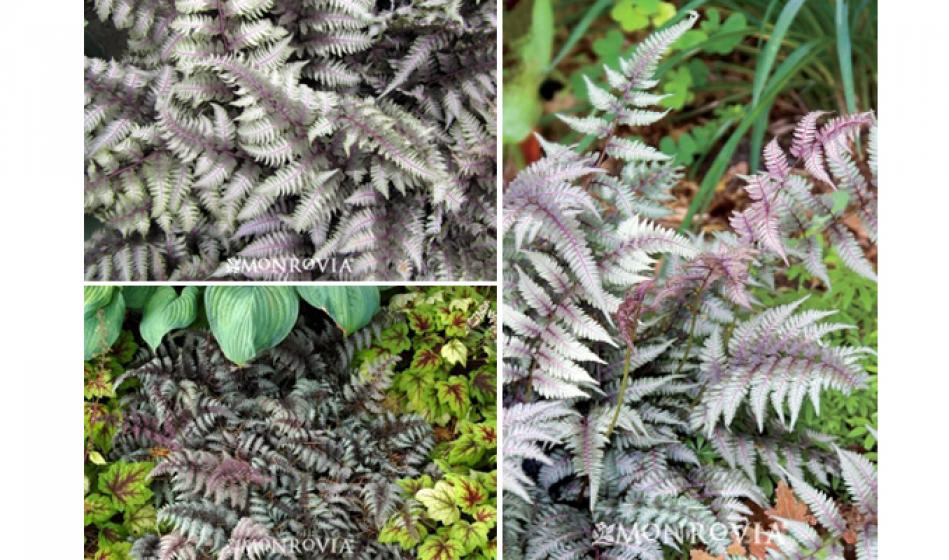JAPANESE PAINTED FERN (Athyrium niponicum 'Pictum')
When you think of ferns your mind wanders off in imagination to places of lush shady forests, babbling brooks and misty rain. Ferns can add a touch of softness to any shady garden and thanks to the Japanese Painted Fern they can also offer a splash of color in an area that can often be challenging to bring color to.
Japanese Painted Ferns are a perennial, deciduous fern that mature to a height of approximately 12 inches. Deeply cut fronds are a combination of lavender, purple and silver splashed over dark green toothy leaves. Slow growing, Japanese painted ferns can be divided once mature, around 3 years after first planting.
As with many ferns, this variety likes to be planted in a full shade to part shade position. In a dappled sun or part sun position the combination of silver and purple will intensify giving you a stunning display of color, although it can take two or three years for the true color of your fern to present itself. Be careful to avoid direct sunlight in the afternoon as even with regular deep watering the delicate fronds will sustain burn and can result in the loss of your fern.
The Japanese Painted Fern will thrive in a moist, well drained area. Each spring, as the first new fronds emerge dig your favorite brand of compost into the ground around the fern to help give it the gentle kick start it needs. Japanese Painted Ferns have few concerns when it comes to pests and diseases as long as air can circulate freely around the plant and drainage issues are addressed. Perhaps the most endearing feature of this fern is that it is a deer resistant plant in the Hampton Roads area.
Often referred to as a groundcover fern, the Japanese Painted Fern is a wonderful choice for borders and as a filler between larger plants. Complimentary plants include Lady Fern (Matteuccia struthiopteris), Japanese Anemone (Anemone x hybrida), Lenten Rose (Hellebore sp.), Foam Flower (Tiarella wherryi), Brunnera ‘Jack Frost’ and Japanese Forest Grass (Hakonechloa macra).
Written by Taryn Ruesch, McDonald Garden Center Perennial Expert (photos courtesy of Monrovia)

